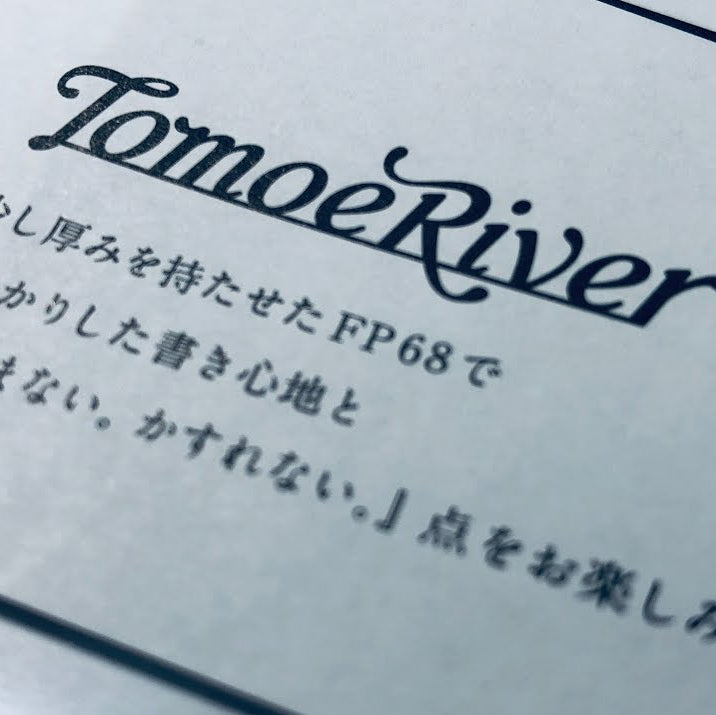Why Tomoe River Paper Is The Best Paper For Fountain Pens
Posted by KRIS ROWLANDS

Not all paper is the same. Even the best fountain pen ink will write differently on different papers. Tomoe River paper, or “TRP” for short, is designed to work with fountain pens. It has a unique texture that provides excellent feedback when writing and does not bleed easily. Consider these benefits of TRP before you go back to writing with your favorite gel pen again.
Paper for Fountain Pens
Tomoe River Paper (TRP) is a paper that was designed specifically to work with fountain pens. It was created to solve the problem that fountain pen ink often does not write well on other typical paper.
When using your fountain pens on copy paper or standard paper, you may have noticed significant feathering and bleed-through. TRP solves this problem by providing excellent feedback when writing and does not bleed easily like other papers.
It's important to consider the importance of paper before you go back to writing with ballpoint pens again. With TRP, you can keep your words clear and crisp without struggling with bleed-through or ghosting on the other side of the page.
There are many benefits to using Tomoe River Paper (TRP), including improved ink flow and less feathering than regular paper. It also provides an amazing sense of control over your writing which you just don't get from regular copy paper. And can we talk SHEENING!? TRP is the best paper to bring out the absolute best colors and sheen in your inks.
Why Tomoe River Paper Is the Best
Paper for Fountain Pens
Tomoe River paper is made to be the perfect writing surface for fountain pens. While you can use any kind of paper with your fountain pen, Tomoe River paper provides an optimal experience.
TRP has a unique texture that is very similar to traditional heavy weight papers, like those made from cotton or linen. This makes it easy for fountain pens to write smoothly across the page without catching on the fibers. It also decreases the amount of ink that lathers up on the page which decreases bleed through or showthrough.
The high-quality texture of Tomoe River paper causes less friction between the pen and the surface, which means ink will flow more easily onto the page. And since TRP is made from pulp made from trees in sustainable forests, it's extremely thin without sacrificing durability. The result is a thick sheet that feels thinner than it really is because of the lack of "tooth" or texture found in most papers.
TRP also uses less ink than other papers, so you'll have to replace your pen cartridge less frequently. This not only saves money but also reduces waste!
The Benefits of Tomoe River Paper
TRP and fountain pens go hand-in-hand. It's a paper that's specifically designed to work with fountain pens. The paper is thin and does not bleed easily, which is why it works so well with fountain pen ink.
The texture of TRP allows for excellent feedback as you write. If you've ever written with a ballpoint pen on normal paper, you know there's hardly any tactile feedback as you write because the fibers don't move up and down as you write, forming an indentation on the paper. With TRP, the fibers are much more pliable and allow for a subtle indentation as your pen moves across the page.
This means that this paper is perfect for those who want to capture their writing in an artistic way or those who want to use calligraphy to create beautifully scripted works on paper.
Another benefit of TRP is that it is acid-free and made using pulp from trees in sustainable forests,. This makes it easier to archive because it won't deteriorate over time like other papers might do after being exposed to moisture or high temperatures over time.
Conclusion
Fountain pens have been around for more than a century and have been used by some of the most famous writers in history, from Hemingway to Virginia Woolf. In this blog post, we take a closer look at the fountain pen and the paper it uses.
Tomoe River paper is a thin, translucent paper that ranks as being one of the smoothest papers that exist. The paper is so thin that it’s possible to see some of the other side through it.
To make sure your writing is as high-quality as it can be, make sure you use a Tomoe River paper for your next fountain pen project.



Stacey On
In paragraph 8, you write that TRP is “made with silk fibers”, but in paragraph 13 that it “has a 100% cotton fiber composition.” I am a huge fan of TRP and am contemplating a project in which fiber content is a determining factor. Could you clarify this contradiction for me?